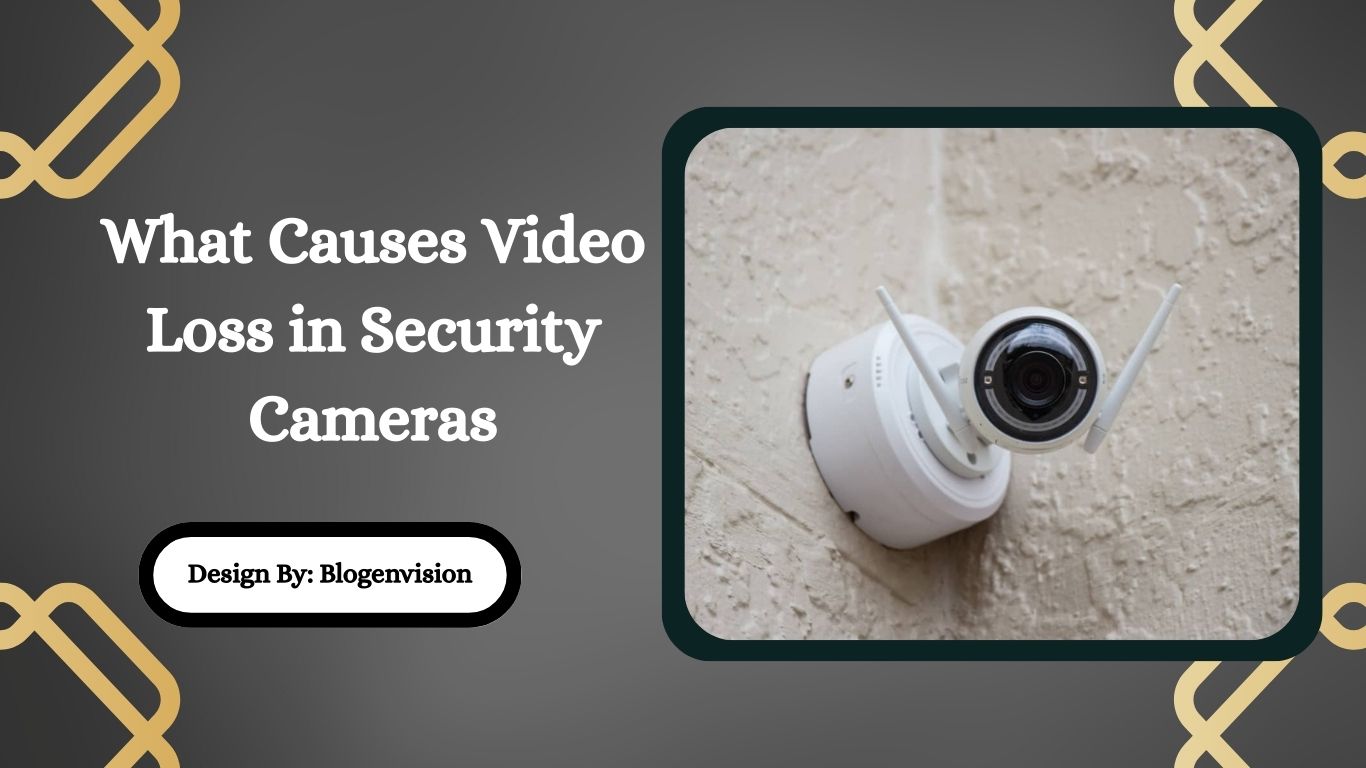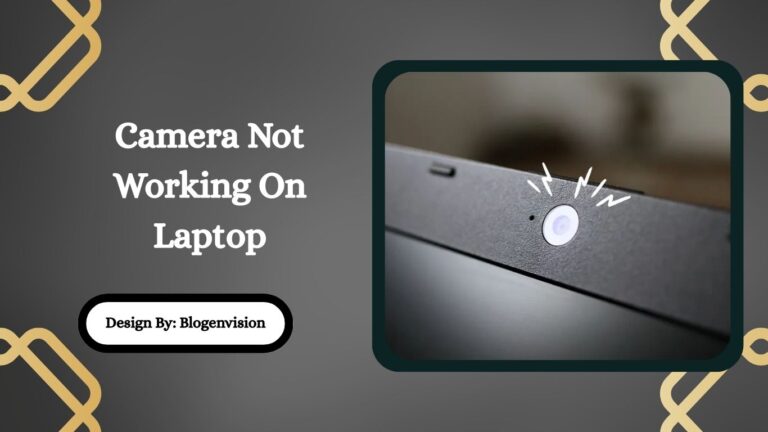What Causes Video Loss in Security Cameras – Complete Guide!
Video loss in security cameras is usually caused by loose cables, power issues, faulty hardware, poor Wi-Fi signals, or software glitches. Identifying the source helps restore your video feed quickly.
Introduction:
Security cameras play a big role in protecting our homes, businesses, and property. But what happens when the screen suddenly goes black or says “No Video”? That’s called video loss and it’s one of the most common problems in surveillance systems.
Whether you use a wired or wireless camera, understanding why video loss happens can help you fix the issue quickly and keep your security system running smoothly. Let’s break it down in simple words.
What Is Video Loss in Security Cameras?

Video loss means your security camera stops showing video or goes completely black. Instead of the usual live feed, you might see messages like:
- “No Video”
- “Video Loss”
- A black screen
- A flickering image
This problem can affect one camera or all cameras in the system. It can happen once in a while or become a constant issue. Either way, it means your security coverage is broken and that can be risky.
Top Reasons for Video Loss in Security Cameras
Let’s go through the most common causes of video loss and how to identify them:
1. Loose or Damaged Cables
This is the number one cause for wired security cameras. If the cable connecting the camera to the recorder or power source is loose, damaged, or cut, the video feed will stop.
How to Fix It?
- Check all power and video cables.
- Look for any cuts, twists, or bent pins.
- Make sure connectors are plugged in tightly.
2. Power Supply Issues
No power = no video. If your camera or DVR/NVR is not getting enough power, the system may shut off or display video loss errors.
How to Fix It?
- Test power adapters and cables.
- Try plugging the camera into a different power outlet.
- Check if the power supply box is working properly.
3. Signal Interference (For Wireless Cameras)
For wireless cameras, interference from other electronic devices or a weak Wi-Fi signal can cause the video to cut out or disappear.
How to Fix It?
- Move the camera closer to the router.
- Avoid placing the camera near microwaves, baby monitors, or thick walls.
- Change your Wi-Fi channel or upgrade to a dual-band router.
4. Faulty DVR/NVR
Sometimes, the problem is not with the camera but with the recorder. A broken DVR or NVR can fail to display or record footage.
How to Fix It?
- Restart the DVR/NVR.
- Check if it shows signs of overheating or failure.
- Update firmware or try replacing the hard drive if needed.
5. Camera Hardware Failure
Security cameras can wear out over time. If the internal parts or sensors are damaged, the camera may not work at all.
How to Fix It?
- Test the camera on another channel or port.
- Replace it with a working camera to confirm the issue.
- If it’s still under warranty, contact the manufacturer.
6. Poor Weather or Environmental Damage
Rain, snow, extreme heat, or lightning can damage cameras, especially outdoor ones. Water or dust getting inside can also lead to permanent failure.
How to Fix It?
- Use weatherproof cameras (rated IP65 or higher).
- Install protective housing.
- Check cameras regularly for signs of moisture or corrosion.
7. Bad Configuration Settings
Sometimes the issue isn’t physical it’s in the settings. Incorrect input settings, resolution mismatches, or channel conflicts can cause the system to show “No Video.”
How to Fix It?
- Make sure your DVR/NVR matches your camera type (analog, IP, etc.).
- Check the video format (NTSC or PAL).
- Reset the camera to factory settings if needed.
8. Firmware or Software Glitches
Outdated firmware or buggy software can cause cameras or recorders to freeze, crash, or lose the video feed.
How to Fix It?
- Go to the manufacturer’s website and update the firmware.
- Reboot your devices after updates.
- Contact tech support for help if the problem continues.
Also Read: How To Win Red Light Camera Ticket – Complete Guide!
How to Prevent Video Loss in the Future?
Here are a few simple tips to keep your security camera system running smoothly:
- Use quality cables and power supplies
- Check your system regularly
- Install surge protectors
- Keep firmware up to date
- Use waterproof and dustproof cameras for outdoor areas
- Back up your footage in the cloud or external drives
Regular maintenance and quick checks can save you from bigger problems down the road.
FAQs:
1. Can bad weather cause video loss in outdoor cameras?
Yes, rain, snow, and heat can damage outdoor cameras, especially if they’re not waterproof. Use weatherproof models and install protective covers to prevent environmental damage.
2. Why do my wireless security cameras keep losing video signal?
Wireless cameras may lose video due to weak Wi-Fi, interference from other electronics, or long distances from the router. Move cameras closer and upgrade to a stronger router if needed.
3. Does a faulty DVR/NVR cause video loss in all cameras?
Yes, if the DVR/NVR is malfunctioning, it can affect multiple cameras. Check for overheating, replace the hard drive, or update firmware to fix the issue.
4. Can low-quality cables cause video feed to drop?
Absolutely. Cheap or damaged cables can cause interruptions or complete video loss. Always use good-quality, shielded cables to ensure a stable and long-lasting video connection.
5. How do I check if my camera has power?
Look for indicator lights on the camera. You can also test it with another power supply or port. If lights are off and connections are correct, the camera might be faulty.
Conclusion:
Video loss in security cameras can be frustrating but is often easy to fix. Most issues come from power problems, damaged cables, poor network signals, or faulty equipment. Regularly checking your system, using quality hardware, and keeping software updated will help prevent problems. By understanding the common causes, you can quickly solve video loss issues and keep your security system running smoothly and reliably, protecting your home or business around the clock.
Related Post:
- Are There Cameras In Movie Theater – What You Should Know!
- Do Atms Have Cameras – Complete Security Guide!
- Types Of Traffic Cameras – Complete Guide to How They Work!
- Ring Camera Alternative – Simple Guide to Home Security Options!
- Do All Traffic Lights Have Cameras – Complete Truth Explained Simply!







